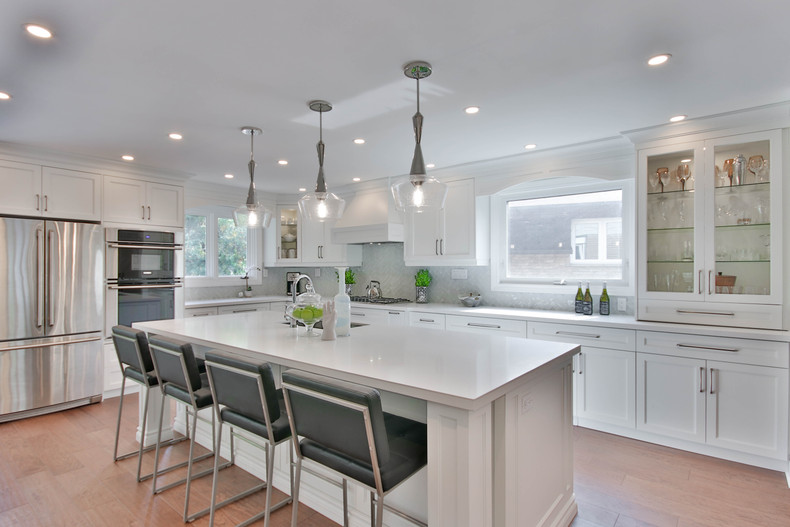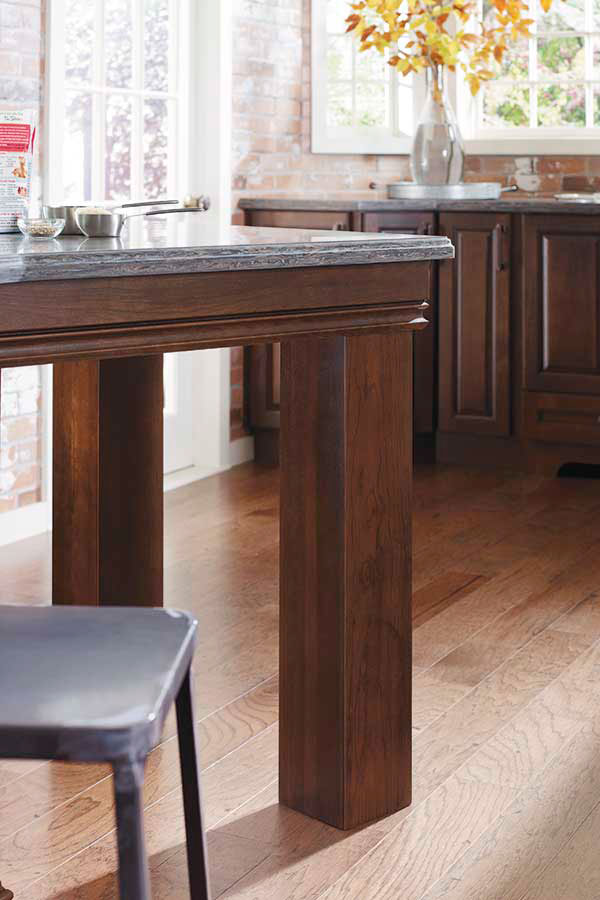Kitchen Island Legs: Enhance Your Kitchen with Strong Assistance
Kitchen Island Legs: Enhance Your Kitchen with Strong Assistance
Blog Article
Important Tips for Selecting the Perfect Dining Table for Your Cooking Area
Picking the excellent table for your kitchen area is more than just a matter of taste; it requires an extensive understanding of your room and needs. Begin by determining your readily available area to guarantee ample clearance for activity. The form of the table plays a critical function; while rectangular tables match larger locations, round ones foster affection, and extendable choices supply flexibility. Material choice is equally important, with hardwoods providing sturdiness and glass lending a modern-day touch. Ultimately, the table needs to integrate with your kitchen's aesthetics and accommodate your family members conveniently. What other aspects might influence this crucial choice?
Step Your Space
Choosing the suitable table begins with a thorough assessment of your offered room. This fundamental step makes sure that the table not just fits pleasantly within the space however additionally complements the overall design and capability of your eating area. Begin by measuring the measurements of the room, taking right into account doorways, home windows, and any type of existing furniture. This will certainly assist you identify the maximum allowable dimension for your dining table.
It is essential to leave ample space for chairs to be drawn out and for people to relocate around the table without blockage. A basic rule of thumb is to permit at least 36 inches of clearance from the side of the table to the closest wall surface or piece of furnishings.
Furthermore, think of the variety of individuals you generally captivate and whether you need added area for guests. Deciding for an extendable table can provide versatility, enabling you to suit differing varieties of diners. By accurately determining your space, you lay the groundwork for selecting a table that enhances both the visual appeals and functionality of your eating area.
Select the Right Forming

On the various other hand, round tables are exceptional for smaller kitchens or intimate events, as they promote discussion by allowing every person to face each various other. They also give a sense of comfort and can fit well in tighter areas because of their lack of sharp corners. Oval tables offer the best of both worlds, combining the length of rectangle-shaped tables with the intimacy of round ones, making them flexible for numerous settings.
Square tables are one more option, specifically fit for square-shaped rooms. They produce a contemporary and balanced appearance, cultivating an equal dining experience for all seated. They may be less practical for bigger events unless they come with extensions. Ultimately, the shape you choose ought to line up with your area dimensions and way of life to ensure both form and function.
Material Factors To Consider
When picking a dining table, product factors to consider are paramount in determining the table's durability, upkeep demands, and total visual. Timber is a timeless choice, providing classic allure and robustness.
Glass-topped tables offer a modern-day, sleek appearance and can make a room show up bigger as a result of their transparency. Nevertheless, they need constant cleansing to avoid spots and fingerprints. In addition, solidified glass is suggested for its added read what he said toughness and security.

Finally, composite materials like MDF (Medium-Density Fiberboard) or plywood are economical alternatives. These materials can imitate the appearance of strong timber however might not offer the very same longevity. They are normally less complicated to clean but can be prone to water damage otherwise correctly secured.
Inevitably, the choice of product must line up with your cooking area's style, your lifestyle requires, and your budget restrictions. (kitchen island legs)
Seats Capacity and Convenience
How do you establish the appropriate seating ability and comfort for your table? This critical action includes assessing both the physical space offered in your kitchen area and your home's useful demands. Begin by measuring your kitchen area to make sure the table fits easily, permitting a minimum of 36 inches of clearance around it for very easy motion. Take into consideration the number of individuals that typically eat together, as this will affect the table size. For a family members of 4, a rectangular table of 48 inches long or a round table with a 48-inch diameter is generally adequate.
Comfort is similarly crucial. The height of the table must preferably be around 30 inches, providing a balanced ergonomic stance for seated restaurants. Chairs ought to sit height of 18 to 20 inches to guarantee a comfy dining posture. In addition, consider the chair design; helpful back-rests and upholstered seats can boost eating convenience significantly, especially during extended meals.
Design and Visual Appeal
Selecting a dining table that suits your style and aesthetics involves balancing individual preference with the existing decoration of your dining space. The table is often the focal point of the cooking area, and its style must match the overall motif of the area. Whether your cooking area boasts a contemporary, minimal appearance or a rustic, farmhouse beauty, the table you pick should integrate with these aspects to create a cohesive and inviting ambience.
Take into consideration products view it now meticulously; wood provides a timeless allure and can vary from rich mahogany for a conventional want to lighter oak for a modern feel. Steel and glass tables, on the other hand, can introduce a streamlined, commercial edge to your kitchen. Don't neglect the table's shape-- rectangle-shaped tables are flexible and traditional, while round and oval options can cultivate a more intimate dining experience.
In addition, pay close attention to details and surfaces. A troubled surface could add personality and warmth, whereas a glossy surface area can add to a clean, modern-day visual. Ultimately, your table must not just in shape effortlessly into your cooking area's style however also mirror your individual style, raising the area both functionally and visually.
Conclusion
In verdict, picking the suitable eating table for a cooking area demands mindful evaluation of space, shape, material, seating capability, and aesthetic consistency. Inevitably, an appropriate dining table promotes an inviting ambience and suits the household conveniently, therefore enhancing the eating experience.

When selecting a dining table, product considerations are extremely important in figuring out the table's toughness, upkeep requirements, and total visual. For a household of 4, a rectangular table of 48 inches long or a round table with a 48-inch size is generally sufficient.
Do not overlook the table's form-- rectangular tables are flexible and classic, while round and oblong choices can promote an extra intimate dining experience. kitchen island legs.
Report this page